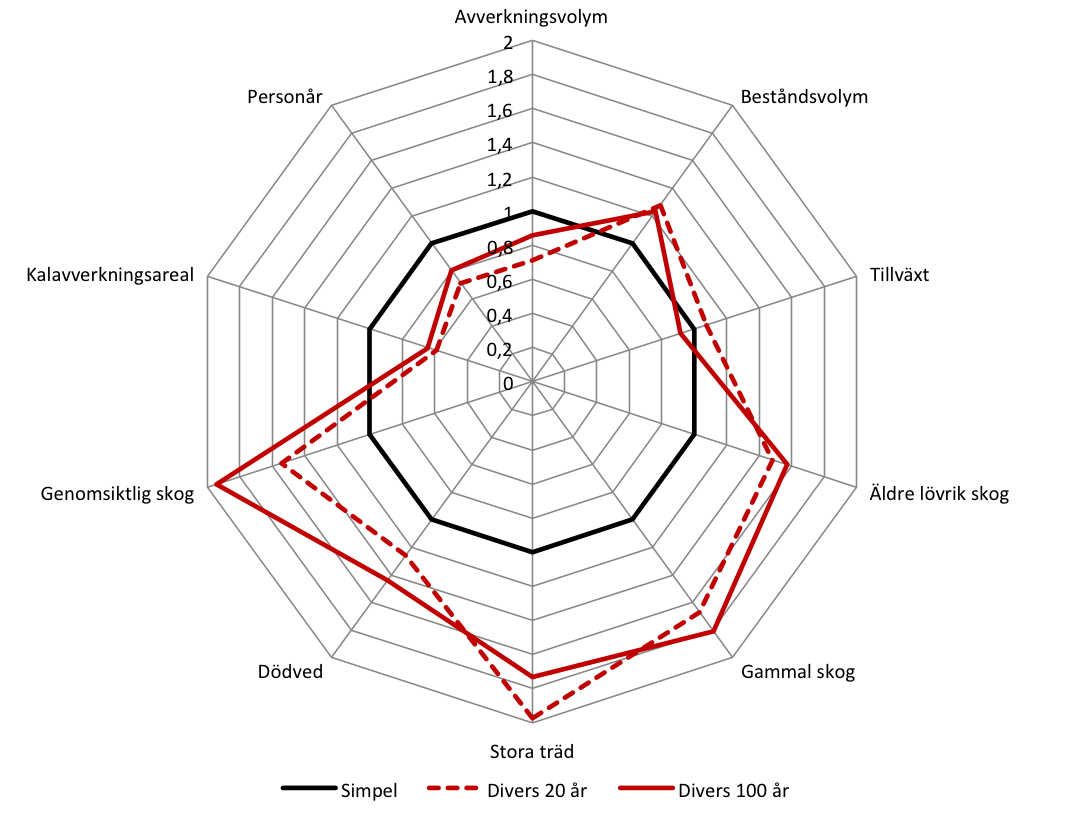Taking into consideration how forest owners actually intend to manage their forests, felling volumes will be 14% lower in the future while ecological values will benefit.
Forest owners manage their forests in different ways. Management strategies can vary from nature conservation to increased production, or to increase the timber stock, for instance in anticipation of a coming generation shift. Some owners have no stated strategy, but can rather be described as passive. If one assumes that forest land is managed the same way by everyone, there is a risk of overestimating future wood supply, or missing the fact that ecological values and recreation benefit from diversity in forest management.
Jeannette Eggers has studied how the forest’s development over a period of a hundred years differs depending on whether one takes into account the different management strategies of owners. With the help of the Heureka system’s software RegWise, Eggers simulated two scenarios. In the first, “Simple”, it was assumed that all private landowners managed the forest the same (based on the reference scenario in SKA08). In the other scenario, “Diverse”, it was assumed that the privately owned land was managed according to five different strategies:
- Passive
- Nature conservation
- Intensive
- Increase production
- Save
The strategies were created based on the answers of 1,169 private forest owners in a survey on forest management.
Differences already after 20 years
Already after 20 years, clear differences could be observed: “I was surprised that we found such great differences already after 20 years. Often, it takes more time to see a clear difference between different alternatives. That the effects are so clear already after 20 years highlights the importance of taking into consideration how different landowners choose to manage their forest even in analyses shorter than a hundred years” says Jeannette Eggers
In the second (“Diverse”) scenario, a 14% lower felling volume was found over a period of a hundred years, compared to the “Simple” scenario. The growing stock increased, and indicators associated with ecological values and recreation benefited: “If you throw all owners into one big pot you might overestimate the potential felling volume, and underestimate indicators tied to the forest’s ecological and social values” says Jeannette Eggers.
Facts
Above image: Relative difference of included indicators in Hässleholm for the two scenarios after 20 and a hundred years, respectively.
The study was conducted in the municipalities of Hässleholm and Vilhelmina, within the framework of PLURAL, a project financed by FORMAS “Starka forskningsmiljöer” 2012-2017.
SKA (skogliga konsekvensanalyser, forestry impact analyses) is produced on a regular basis by the Swedish Forest Agency in cooperation with the Swedish University of Agricultural Sciences (SLU). Based on a number of simulated scenarios in which Sweden’s forests are used and managed in various ways, the consequences are measured over a period of a hundred years. The analyses offer detailed information on the conditions in the forest, which can then be used as a basis for decision-making in issues involving the long-term use of forest land.
Studien: Eggers, J.; Holmström, H.; Lämås, T.; Lind, T.; Öhman, K. Accounting for a Diverse Forest Ownership Structure in Projections of Forest Sustainability Indicators. Forests 2015, 6, 4001-4033.

